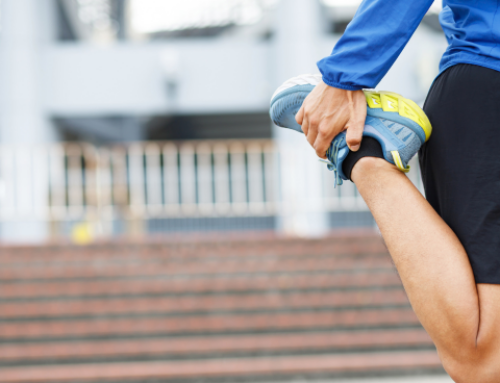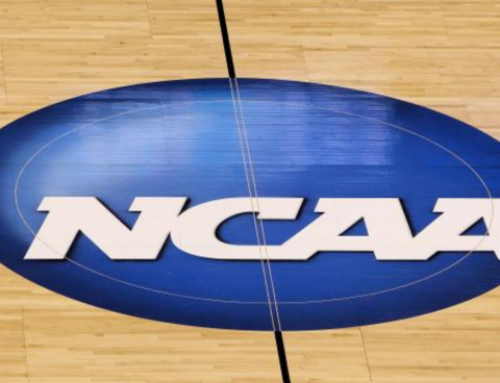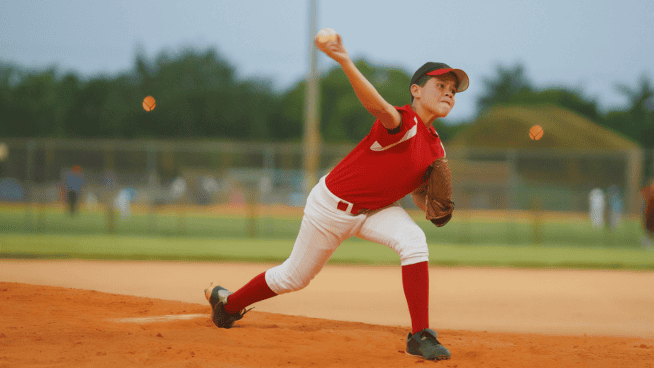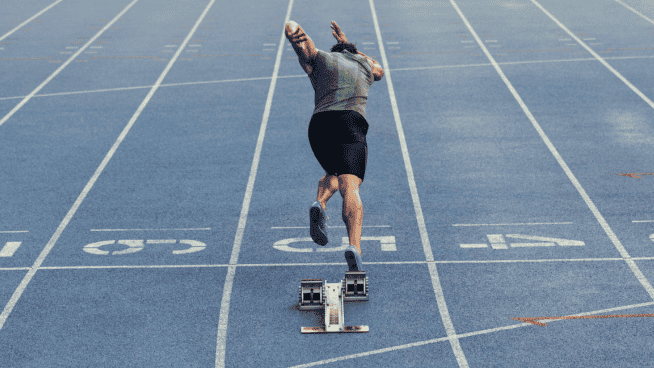Overlooked Qualities That Separate Elite Athletes From Good Athletes
Every receiver knows how to run a slant and comeback route. Every point guard can throw an entry pass into the post. These are entry-level skills in football and basketball.
Are there levels to executing these essential fundamental habits of these respective sports?
Absolutely. And this is just a fraction of what separates good athletes from elite athletes.
Elite athletes will focus on the micro principles and disciplines that many overlooks. If you’re a good athlete looking to transcend into the company of the elite, adopt these four habits.
4 Simple, But Overlooked Qualities That Separate Elite Athletes From Good Athletes
Adhere to the slight edge
Our choices determine our life paths. And this is especially the case when it comes to your athletic potential.
Everything in our lives is on a curve. And the quality and direction of this curve are determined by our daily choices. This, in a nutshell, is what, author of ‘The Slight Edge,’ Jeff Olson describes with this philosophy.
It’s not the significant events and moments that determine our success. The simple daily disciples create the separation between good and elite athletes.
Adhering to net-positive simple daily disciples leads to the curve moving upward along with better game-time performance. Conversely, simple errors in judgment lead to the curve moving downward along with decreased game-time performance.
For instance, a quarterback can become obsessed with their foot placement, hand placement on the ball, and film study. Of course, all quarterbacks watch film, but some quarterbacks, such as Peyton Manning, Tom Brady, and Drew Brees, lived and breathed film study.
Neither have the most robust arms nor were they the most athletic. Still, they created an unfair advantage by doing what other quarterbacks won’t do: studying relentlessly and being disciplined on their sports’ mundane aspects.
Be disciplined when no one is looking
Hall of fame and multiple championship-winning coach John Wooden states, “The true test of a man’s character is what he does when no one is watching.”
And it’s with that said, the most significant indication of your potential success is what you do when no one is watching or telling you what to do. Good athletes will show up and work hard at practice, but what about the offseason when the coach isn’t holding your hand and telling you what to do?
Will you lower your standards and let your foot off the gas pedal some? Nearly all athletes will train in some manner during the off-season, but as we all know, not every athlete comes back the next season ready to make the leap. Only a select few will have diligently put that type of effort in.
For example, there’s a lot of great receivers in the NFL, but then there’s Jerry Rice—the greatest receiver ever to play. It wasn’t Rice’s speed nor physical stature and attributes that made him the greatest. Instead, it was his work ethic, attention to detail through things such as route running, film study, and his offseason training regime.
In the book Talent is Overrated by Geoff Colvin, part of Rice’s regimen are shared:
“In team workouts, he was famous for his hustle; while many receivers would trot back to the quarterback after catching a pass, Rice would sprint to the end zone after each reception. He would typically continue practicing long after the rest of the team had gone home. Most remarkable were his six-days-a-week off-season workouts, which he conducted entirely on his own. Mornings were devoted to cardiovascular work, running a hilly five-mile trail; he would reportedly run ten forty-meter wind sprints up the steepest part. In the afternoons he did equally strenuous weight training. These workouts became legendary as the most demanding in the league, and other players would sometimes join Rice just to see what it was like. Some of them got sick before the day was over.”
Go the extra mile, even when no one is watching nor demanding you to, and you’ll start to create distance from other athletes effortlessly.
Be willing to seek out help
The African proverb states that “If you want to go fast, go alone. If you want to go far, go together.”
While a phenomenon talent from the onset of his pro career, Michael Jordan had numerous areas of improvement before ultimately becoming the greatest in his sport. Besides learning to get teammates involved and trust them, he couldn’t get past the Detroit Pistons.
It wasn’t due to talent. It was mainly due to physicality. While the Pistons couldn’t “out-talent” Jordan, they could beat him up in a sense through hard fouls every time he came in the paint.
After a few years of this, Jordan needed to change and eventually linked up with renowned expert Tim Grover to help him transform his body and mind. As we all know by now, Jordan’s Bulls overcame those Pistons teams and eventually ended his career with six championships.
While you may not have millions of dollars to spend at the moment, don’t let this stop you. You can seek help today by leveraging resources such as Youtube to learn about different recovery and performance modalities. Also, listen to interviews of what your favorite athletes in your respective sport do.
Believe there’s no such thing as failure, only feedback
During game 5 of the Western Conference Semifinals, Kobe Bryant shot four airballs against the Utah Jazz as a rookie. Instead of deflating him, this game in 1997 was a career-defining moment for Kobe.
Immediately after being eliminated, he went to Palisades High to work on his shot. While it wasn’t a pleasant feeling at the moment, Kobe learned valuable lessons that led him to have a hall of fame career. The NBA is much different from high school, so you have to account for fatigue more and prep your body for the marathon NBA season.
On the big stage and coming up short, some athletes get alligator arms and become hesitant about taking the big shot again. As someone who has shot airballs in a game, one airball would make most hesitant the next time around, but shooting four is hard to comprehend to many. But this is why Kobe is elite and wasn’t just another routine NBA shooting guard.
Be like Kobe and adopt the mamba mentality and realize that there is no such thing as failure. There’s only feedback and lessons in which you can use for the next time.
There are many good athletes but few elite athletes. If becoming an elite athlete is your goal, focus on your sport’s intangible and small overlooked details. Let the others focus on the highlight reel-worthy aspects. Your game will do all the talking that’s needed.
RECOMMENDED FOR YOU
Overlooked Qualities That Separate Elite Athletes From Good Athletes
Every receiver knows how to run a slant and comeback route. Every point guard can throw an entry pass into the post. These are entry-level skills in football and basketball.
Are there levels to executing these essential fundamental habits of these respective sports?
Absolutely. And this is just a fraction of what separates good athletes from elite athletes.
Elite athletes will focus on the micro principles and disciplines that many overlooks. If you’re a good athlete looking to transcend into the company of the elite, adopt these four habits.
4 Simple, But Overlooked Qualities That Separate Elite Athletes From Good Athletes
Adhere to the slight edge
Our choices determine our life paths. And this is especially the case when it comes to your athletic potential.
Everything in our lives is on a curve. And the quality and direction of this curve are determined by our daily choices. This, in a nutshell, is what, author of ‘The Slight Edge,’ Jeff Olson describes with this philosophy.
It’s not the significant events and moments that determine our success. The simple daily disciples create the separation between good and elite athletes.
Adhering to net-positive simple daily disciples leads to the curve moving upward along with better game-time performance. Conversely, simple errors in judgment lead to the curve moving downward along with decreased game-time performance.
For instance, a quarterback can become obsessed with their foot placement, hand placement on the ball, and film study. Of course, all quarterbacks watch film, but some quarterbacks, such as Peyton Manning, Tom Brady, and Drew Brees, lived and breathed film study.
Neither have the most robust arms nor were they the most athletic. Still, they created an unfair advantage by doing what other quarterbacks won’t do: studying relentlessly and being disciplined on their sports’ mundane aspects.
Be disciplined when no one is looking
Hall of fame and multiple championship-winning coach John Wooden states, “The true test of a man’s character is what he does when no one is watching.”
And it’s with that said, the most significant indication of your potential success is what you do when no one is watching or telling you what to do. Good athletes will show up and work hard at practice, but what about the offseason when the coach isn’t holding your hand and telling you what to do?
Will you lower your standards and let your foot off the gas pedal some? Nearly all athletes will train in some manner during the off-season, but as we all know, not every athlete comes back the next season ready to make the leap. Only a select few will have diligently put that type of effort in.
For example, there’s a lot of great receivers in the NFL, but then there’s Jerry Rice—the greatest receiver ever to play. It wasn’t Rice’s speed nor physical stature and attributes that made him the greatest. Instead, it was his work ethic, attention to detail through things such as route running, film study, and his offseason training regime.
In the book Talent is Overrated by Geoff Colvin, part of Rice’s regimen are shared:
“In team workouts, he was famous for his hustle; while many receivers would trot back to the quarterback after catching a pass, Rice would sprint to the end zone after each reception. He would typically continue practicing long after the rest of the team had gone home. Most remarkable were his six-days-a-week off-season workouts, which he conducted entirely on his own. Mornings were devoted to cardiovascular work, running a hilly five-mile trail; he would reportedly run ten forty-meter wind sprints up the steepest part. In the afternoons he did equally strenuous weight training. These workouts became legendary as the most demanding in the league, and other players would sometimes join Rice just to see what it was like. Some of them got sick before the day was over.”
Go the extra mile, even when no one is watching nor demanding you to, and you’ll start to create distance from other athletes effortlessly.
Be willing to seek out help
The African proverb states that “If you want to go fast, go alone. If you want to go far, go together.”
While a phenomenon talent from the onset of his pro career, Michael Jordan had numerous areas of improvement before ultimately becoming the greatest in his sport. Besides learning to get teammates involved and trust them, he couldn’t get past the Detroit Pistons.
It wasn’t due to talent. It was mainly due to physicality. While the Pistons couldn’t “out-talent” Jordan, they could beat him up in a sense through hard fouls every time he came in the paint.
After a few years of this, Jordan needed to change and eventually linked up with renowned expert Tim Grover to help him transform his body and mind. As we all know by now, Jordan’s Bulls overcame those Pistons teams and eventually ended his career with six championships.
While you may not have millions of dollars to spend at the moment, don’t let this stop you. You can seek help today by leveraging resources such as Youtube to learn about different recovery and performance modalities. Also, listen to interviews of what your favorite athletes in your respective sport do.
Believe there’s no such thing as failure, only feedback
During game 5 of the Western Conference Semifinals, Kobe Bryant shot four airballs against the Utah Jazz as a rookie. Instead of deflating him, this game in 1997 was a career-defining moment for Kobe.
Immediately after being eliminated, he went to Palisades High to work on his shot. While it wasn’t a pleasant feeling at the moment, Kobe learned valuable lessons that led him to have a hall of fame career. The NBA is much different from high school, so you have to account for fatigue more and prep your body for the marathon NBA season.
On the big stage and coming up short, some athletes get alligator arms and become hesitant about taking the big shot again. As someone who has shot airballs in a game, one airball would make most hesitant the next time around, but shooting four is hard to comprehend to many. But this is why Kobe is elite and wasn’t just another routine NBA shooting guard.
Be like Kobe and adopt the mamba mentality and realize that there is no such thing as failure. There’s only feedback and lessons in which you can use for the next time.
There are many good athletes but few elite athletes. If becoming an elite athlete is your goal, focus on your sport’s intangible and small overlooked details. Let the others focus on the highlight reel-worthy aspects. Your game will do all the talking that’s needed.










